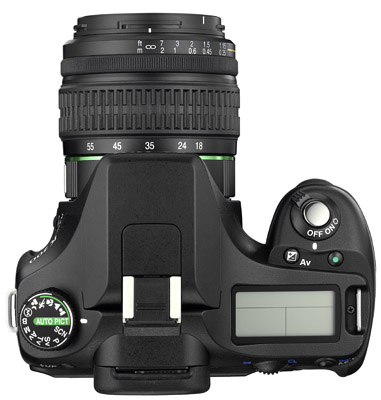This article is more than 1 year old
Pentax K200D digital SLR
Not as family-friendly as Pentax proposes
In terms of features, the K220D has a 10.1-megapixel, 23.5 x 15.7mm CCD that shoots both RAW (PEF and DNG) and JPEG files up to a resolution of 3872 x 2592; a CCD cleaning system; in-camera sensor-shifting shake-reduction system; a shutter-speed range of 30-1/4000sec plus Bulb for long exposures; an ISO range of 100-1600; a crop of shooting modes, including auto, program AE, plus aperture, shutter and sensitivity priority - the latter matches aperture and shutter speed to the ISO setting.
It also features a handful of drive modes, including continuous shooting and auto bracket, plus various scene and picture modes, such as macro, portrait, night portrait and food, as well as in-camera editing, which lets you convert RAW files to JPEGs or tweak the image colour, sharpness and brightness.
Our sample came with an SMC Pentax DA 18-55mm F3.5-5.6 lens, equivalent to a 28-83mm lens in the 35mm format.

Despite its size, the K200D fits quite snugly in the hands
The K200D is aimed at the novice and claims to be family-friendly, and it is indeed straightforward and intuitive, making it easy to operate. Switch on is fairly quick, with the camera ready to take a shot in around a second. OK, it’s not quite the Usain Bolt of digital cameras, but it’s not bad, and shutter lag isn’t a problem either. In terms of handling, there’s certainly plenty to grip, and despite its size, the K200D fits quite snugly in the hands.
However, it feels heavy and we’re not convinced that many people would want to carry this around all day on a sight-seeing tour.
In terms of feedback, there’s plenty to be had from the viewfinder and the two LCD screens, top and back. You’d have little trouble knowing what settings you - or the K200D - have selected. The menu system offers four main groups - Record, Playback, Set-up and Custom - and is very easy to navigate.
The Fn function button makes it quick and easy to adjust parameters such as flash, ISO and white balance. Switching between JPEGs to RAWs is a doddle thanks to the dedicated RAW button on the front, and it’s nice not having to navigate a menu in order to switch the image stabilisation system on or off.
